 Alan got a school assignment, because his teacher wanted some help decorating the classroom. Each kid was asked to create a holiday candy cane, and help by the parents was allowed. After hearing about the assignment my creativity got a boost. My idea was simple but I expect it will look pretty good.
Alan got a school assignment, because his teacher wanted some help decorating the classroom. Each kid was asked to create a holiday candy cane, and help by the parents was allowed. After hearing about the assignment my creativity got a boost. My idea was simple but I expect it will look pretty good.
Materials
- Wire frame: 1–2 pieces of metal wire for the cane shape
- Filler: Aluminum foil
- Yarn/wool: Red, white, and green
- Tape: Masking or packing tape
- Tools: Scissors; optional pliers for bending wire
Prep the frame (5–10 min)
- Shape: Bend the wire into a long “J” for the candy cane.
- Secure ends: Fold or curl the wire tips inward and tape over them. Dont leave any sharp points.
- Test sturdiness: Gently wiggle the cane. If it flops, add a second wire along the stem.
Add volume (5–10 min)
- Stuff: Wrap foil around the frame to make it thicker.
- Kid job: Hold and squish the filler to shape the curve.
- Tape wrap: Lightly tape the filler so it stays in place. Don’t over-tape; yarn will cover it.
Wrap with yarn (15–25 min)
- Anchor start: Tie or tape the end of the red yarn at the base.
- Spiral wrap: Wind the yarn around the cane in a spiral, keeping wraps close.
- Stripe pattern: After a red section, switch to white, then green.
- Cover gaps: If you see filler, add a few extra wraps over that spot.
- Finish end: Tuck the final yarn end under a nearby wrap and add a tiny piece of tape at the back.

 Over 2000 little pieces, two instruction manuals with over 400 pages, without any helping hand! Alan has been working days to build his newest lego set. The
Over 2000 little pieces, two instruction manuals with over 400 pages, without any helping hand! Alan has been working days to build his newest lego set. The  I continue to see new creative projects which I can realize with a simple coconut. After making a drinking cup, a cookie jar and an orchid pot I now recreated a project I already did in the past, but now with a coconut as an important part. My new project is a coco insect hotel. I made an
I continue to see new creative projects which I can realize with a simple coconut. After making a drinking cup, a cookie jar and an orchid pot I now recreated a project I already did in the past, but now with a coconut as an important part. My new project is a coco insect hotel. I made an  First step was cutting a cocunut in half. This is getting easier every time now that I’m getting some experience. With the coco cut open you need to remove all the white inside. I use a dull knife to cut the white ‘meat’ in small strips which are easy to remove. After drying the empty coconut I sanded the edges and that was the coco part. All done. Now I get some reed, and cut this into small pieces of around 4 cm each. I used two types of reed, new fresh green reed, and older dried up light brown reed. The fresh green reed was easier to deform, so it made it easier to fit inside the coco. Before putting the reed inside the coco I sanded it a little to take away any imperfections. I mixed sizes so that different insect could find different sizes rooms in our hotel.
First step was cutting a cocunut in half. This is getting easier every time now that I’m getting some experience. With the coco cut open you need to remove all the white inside. I use a dull knife to cut the white ‘meat’ in small strips which are easy to remove. After drying the empty coconut I sanded the edges and that was the coco part. All done. Now I get some reed, and cut this into small pieces of around 4 cm each. I used two types of reed, new fresh green reed, and older dried up light brown reed. The fresh green reed was easier to deform, so it made it easier to fit inside the coco. Before putting the reed inside the coco I sanded it a little to take away any imperfections. I mixed sizes so that different insect could find different sizes rooms in our hotel.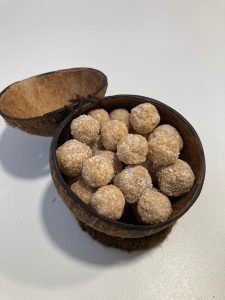 Super easy, super tasty and super fun to make. What else could you ask for.
Super easy, super tasty and super fun to make. What else could you ask for.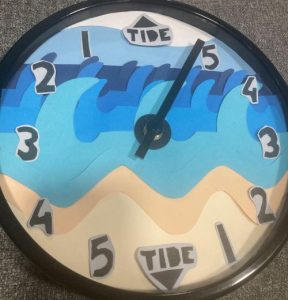 I bought the mechanism for a tidal clock. Basically a regular clock, but instead of showing the hours it will indicate the time it takes to reach high tide and low tide. We love visiting the La Laja beach with low tide, so this is a perfect ‘thing’ to place on the wall. I only bought the mechanism, so I will need to make the entire clock myself. I could have bought a finished product directly, but I did not like the versions that were available. I thought I could do better myself.
I bought the mechanism for a tidal clock. Basically a regular clock, but instead of showing the hours it will indicate the time it takes to reach high tide and low tide. We love visiting the La Laja beach with low tide, so this is a perfect ‘thing’ to place on the wall. I only bought the mechanism, so I will need to make the entire clock myself. I could have bought a finished product directly, but I did not like the versions that were available. I thought I could do better myself.

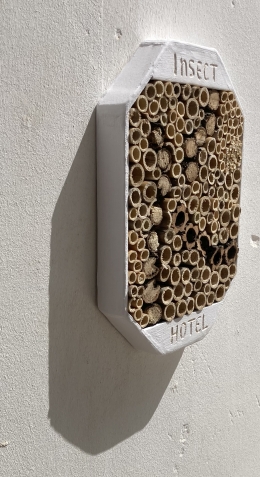 Our birdhouse showed us we that we had set our goals way to high. Our objectives were unobtainable. Maybe it was caused by the heat, or the general lack of birds in our area. We don’t know, but it is clear that after more than half a year we haven’t seen a single bird getting near the birdhouse we placed outside of Alex’ room.
Our birdhouse showed us we that we had set our goals way to high. Our objectives were unobtainable. Maybe it was caused by the heat, or the general lack of birds in our area. We don’t know, but it is clear that after more than half a year we haven’t seen a single bird getting near the birdhouse we placed outside of Alex’ room.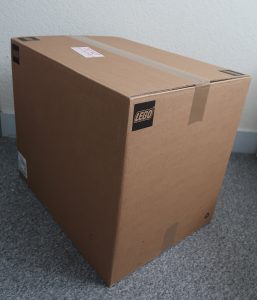 It arrived! A big box was delivered to my home. I am very happy because I know what is inside. Do you know? The kids will be happy for sure, even though Alan will need to be a bit patient. He is still a little small for this box. Alex will be very happy, as it fits perfectly with the small collection he already has.
It arrived! A big box was delivered to my home. I am very happy because I know what is inside. Do you know? The kids will be happy for sure, even though Alan will need to be a bit patient. He is still a little small for this box. Alex will be very happy, as it fits perfectly with the small collection he already has.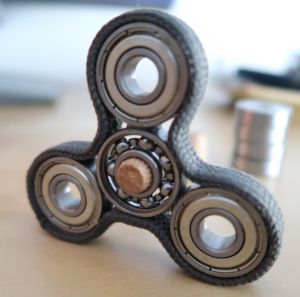 All the kids in Alex’ school have a spinner, except for Alex, and that situation needed to be corrected. Buying a spinner would have been the easiest, but making our own spinning toy was much more fun.
All the kids in Alex’ school have a spinner, except for Alex, and that situation needed to be corrected. Buying a spinner would have been the easiest, but making our own spinning toy was much more fun.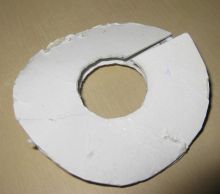 Step 1:
Step 1: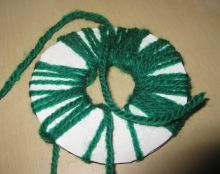 Step 2:
Step 2: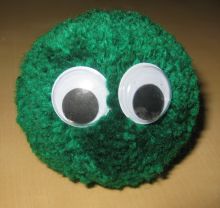 Step 3:
Step 3: